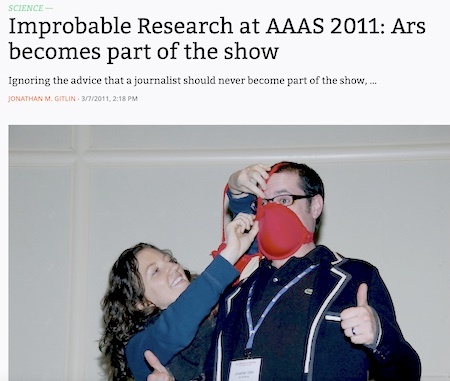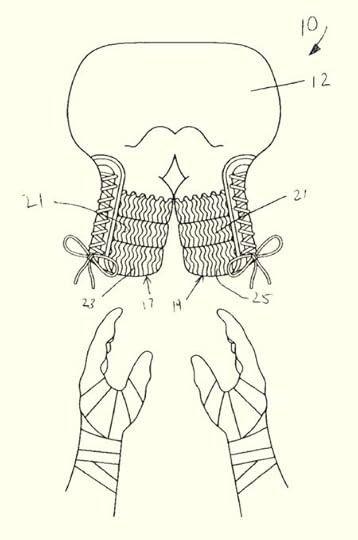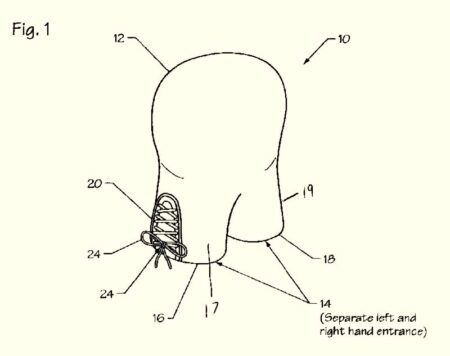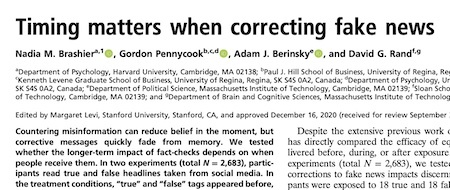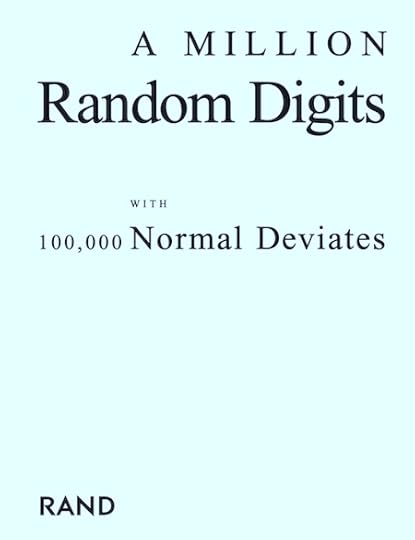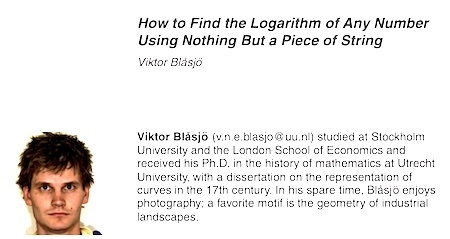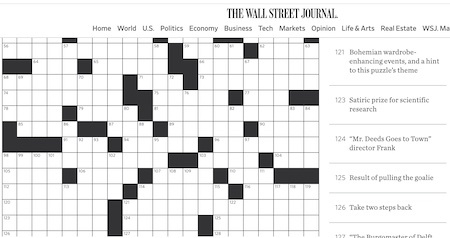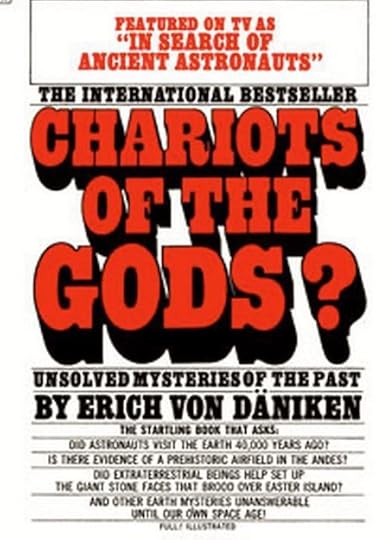Marc Abrahams's Blog, page 88
February 8, 2021
Ten Years Ago and Again at AAAS: The Emergency Bra
Ten years ago, an emergency defense against airborne viruses (and much else) starred in the Improbable Research session at the Annual Meeting of the AAAS (Association for the Advancement of Science), held that year (2011) in Washington, DC. Johnathan Gitlin wrote about it—and took part in the event—for Ars Technica:
That Prize-winning Brassiere, Then and Now
At this point, forgetting the adage that the journalist should never become part of the story, your author somehow ended up on stage. To provide some context, in 2009, Dr. Elena Bodnar, a Ukrainian physician, won the Public Health Prize for inventing a bra that can turn into a pair of emergency face masks, one for the wearer of the brassiere and one for a lucky bystander. We had been shown video footage of the 2009 ceremony, with a first amused, then slightly shocked-looking pair of Nobel laureates (Paul Krugman, Economics 2008; Wolfgang Ketterle, Physics, 2001) being used as demonstration models, as Dr. Bodnar removed her invention which she was wearing it at the time, and attached it to their faces. Dr. Bodnar then whipped out another bra, one half of which was then strapped to Orhan Parmuk (Literature, 2006).
As you can see from the photograph above, I helped model Dr. Bodnar’s invention, an example of which had been brought along.
Here is the video to which he refers. It shows Dr. Bodnar accepting her prize— and giving the first public demonstration of her invention—at the 2009 Ig Nobel Prize ceremony at Harvard University.
Dr. Bodnar went on to perfect her design, and formed a company that now sells the invention, under the brand name Emergency Bra, worldwide.
The emergency bra has played a role at pretty much every AAAS Annual Meeting since 2010. It, and its inventor, will make a new appearance this year, in the Improbable Research session, on Thursday, February 11, at the 2021 AAAS Annual Meeting, which is all happening online.

The ‘Uni Boxing Glove’ [patent]
“Too often deaths occur to boxers because of the devastating head trauma received in a boxing match or during practice. A glove that would lessen the trauma without diminishing the excitement and skill of the sport, would certainly be a welcome addition to the art.”
The welcome addition in question was the creation of the ‘Uni Boxing Glove’ from inventor Aurillo Cummings (US Patent 7904967B1, 2008)
As the name suggests, the invention replaces a boxer’s pair of gloves with one uni-glove [see drawings]
BONUS Assignment [optional]
The patent document doesn’t go into much detail regarding how one big glove might be less damaging than two smaller ones. Elaborate.
Research research by Martin Gardiner

February 4, 2021
Pennycook: Timing Matters When Correcting Fake News
Peace Prize winner Gordon Pennycook and colleagues did an experiment about how to disrupt the workings of genuinely faked news. They published a study about what they learned:
“Timing Matters When Correcting Fake News,” Nadia M. Brashier, Gordon Pennycook, Adam J. Berinsky, and David G. Rand, Proceedings of the National Academy of Sciences, vol. 118, no. 5, February 2, 2021, e2020043118.
The study explains: “Countering misinformation can reduce belief in the moment, but corrective messages quickly fade from memory. We tested whether the longer-term impact of fact-checks depends on when people receive them…. Providing fact-checks after headlines (debunking) improved subsequent truth discernment more than providing the same information during (labeling) or before (prebunking) exposure.”
Co-author Nadia Brashier says “Is there an optimal time to correct fake news? Yes! And it’s surprising. In a new paper in PNAS, we show that providing fact-checks *after* people read headlines is more effective than supplying the same information before or during exposure.”
Peace Prize Winner PennycookThe 2016 Ig Nobel Peace Prize was awarded to Gordon Pennycook, James Allan Cheyne, Nathaniel Barr, Derek Koehler, and Jonathan Fugelsang for their scholarly study called “On the Reception and Detection of Pseudo-Profound Bullshit”.
The full citation for that study: “On the Reception and Detection of Pseudo-Profound Bullshit,” Gordon Pennycook, James Allan Cheyne, Nathaniel Barr, Derek J. Koehler, and Jonathan A. Fugelsang, Judgment and Decision Making, Vol. 10, No. 6, November 2015, pp. 549–563.
Liars, SavoredThat 2016 Ig Nobel Prize ceremony also presented the year’s prize in psychology to Evelyne Debey, Maarten De Schryver, Gordon Logan, Kristina Suchotzki, and Bruno Verschuere, for asking a thousand liars how often they lie, and for deciding whether to believe those answers.
REFERENCE: “From Junior to Senior Pinocchio: A Cross-Sectional Lifespan Investigation of Deception,” Evelyne Debey, Maarten De Schryver, Gordon D. Logan, Kristina Suchotzki, and Bruno Verschuere, Acta Psychologica, vol. 160, 2015, pp. 58-68.

If you really love numbers, and love surprises…
Yes, if you really love numbers—and love surprises—savor this video review of the book A Million Random Digits with 100,000 Normal Deviates:

February 3, 2021
The Wasted Chewing Gum Bacteriome and the Emperors
“Improbable Research: Wasted Gum, Imperiled Emperors, Hair-worn Steel” is one of the non-Ig-Nobel columns in the special Ig Nobel issue (vol. 26, no. 6) of the magazine. Highlights of that column in this issue: The Wasted Chewing Gum Bacteriome, and Statistical Reliability Analysis for a Most Dangerous Occupation: Roman Emperor.
Here’s the front cover of the magazine issue:

February 2, 2021
Logarithms from a cheap necklace
“Leibniz’s recipe for determining logarithms in this way is delightfully simple and can easily be carried out in practice using, for example, a cheap necklace pinned to a cardboard box with sewing needles.”
So wrote Viktor Blåsjö, in the essay “How to Find the Logarithm of Any Number Using Nothing But a Piece of String,” in the College Mathematics Journal, in 2016.

February 1, 2021
AI and the Duck / Rabbit illusion [an improbable experiment]
 The first (documented) version of the famous ‘Duck-Rabbit’ illusion is an unattributed drawing from the 23 October 1892 issue of the German Humour Magazine Fliegende Blätter,
The first (documented) version of the famous ‘Duck-Rabbit’ illusion is an unattributed drawing from the 23 October 1892 issue of the German Humour Magazine Fliegende Blätter,
Since 1892, many thousands of people have struggled to decide whether the image is a duck or a rabbit. Results are about 50/50, with viewers seeing either a duck or a rabbit (sometimes in quick succession) – but not both at the same time.
Scroll-on to 2021 – how will cutting-edge AI image recognition see the image?
Experiment : The famous Duck/Rabbit image was uploaded to Google Cloud’s Vision API, which, they say :
“[…[ offers powerful pre-trained machine learning models through REST and RPC APIs.“
And can :
“Assign labels to images and quickly classify them into millions of predefined categories. Detect objects and faces, read printed and handwritten text, and build valuable metadata into your image catalog.”
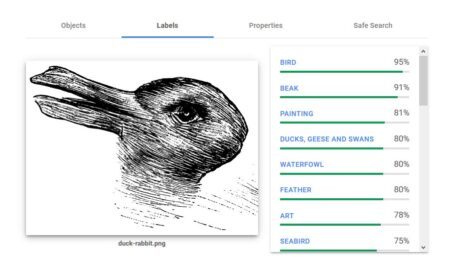 Results : Google Cloud’s Vision API was :
Results : Google Cloud’s Vision API was :
• 95% confident it’s a bird
• 80% confident it’s a waterfowl
• 73% confident it’s a duck
Rabbit was, however, 100% absent.
From which conclusions may, or may not, be drawn.
BONUS Assignment [optional] Will Google Cloud’s Vision API see a rabbit next time? Perform your experiments here. (a sample image to drag’n’drop can be found here)
Research research by Martin Gardiner

January 31, 2021
Podcast Episode #1053: “Does One Armpit Smell Like the Other?”
In Podcast Episode #1053, Marc Abrahams shows an unfamiliar research study to synthetic biologist Christina Agapakis. Dramatic readings and reactions ensue.
Remember, our Patreon donors, on most levels, get access to each podcast episode before it is made public.
Christina Agapakis encounters:
“Human Axillary Odor: Are There Side-Related Perceptual Differences?” Camille Ferdenzi, Benoist Schaal, and S. Craig Roberts, Chemical Senses, vol. 34, no. 7, 2009, pp. 565-571.
Seth Gliksman, Production Assistant
Available on Spotify, Apple Podcasts, Overcast, Google Podcasts, AntennaPod, BeyondPod and elsewhere!

January 30, 2021
Ig Nobel Prizes in the Wall Street Journal Crossword Puzzle
The Ig Nobel Prizes have again wandered into a crossword puzzle, this time as a clue in the January 23, 2021 puzzle in the Wall Street Journal. The clue for one of the across words is:
123 Satiric prize for scientific research
By our lazy count, this is the third time the Ig Nobel Prizes have appeared in a major crossword puzzle (if there is such a thing as a major crossword puzzle). The Week used it in their puzzle on October 19, 2015. The New York Times used it in their puzzle on December 20, 2020.
The Igs have also been an answer on the Jeopardy! TV program eight times or so.
(Thanks to Steven Adelman for bringing this to our attention.)

January 29, 2021
British Governmental Action Inspired by Ancient Aliens from Outer Space
Ig Nobel Literature Prize winner Erich von Däniken‘s books about alien visitors to earth is having a large, government-boosted economic and social impact on the greater-Manchester region, reports the Manchester Evening News:
British Governmental Action Inspired by Ancient Aliens from Outer Space
A huge new theme park is opening an hour’s drive from Manchester – and it’s inspired by a book that says aliens have visited earth
… Blackpool Council is preparing to use compulsory purchase powers to secure land for a £300m entertainment complex.
It means land and property owners within the boundaries of land earmarked for the ‘Blackpool Central’ project can expect to be forced to sell up so redevelopment can start soon.
The main tenant of the redeveloped site will be the Chariots of the Gods Entertainment Park – an indoor theme and adventure park inspired by books from the 1960s and 70s by Swiss author Erich von Däniken.
The books explore a theory that alien visitations inspired ancient civilisations.
BlackPool Council, a governmental agency, says this is “The biggest single investment in Blackpool for more than a century.”
The illustration reproduced here [above], showing spectators seated in a very large amusement park ride overlooking a giant pyramid in the sunset was supplied by Blackpool Council. The council also supplied this promotional video:
von Däniken’s Ig Nobel PrizeThe 1991 Ig Nobel Prize for literature was awarded to Erich von Däniken, visionary raconteur and author of Chariots of the Gods, for explaining how human civilization was influenced by ancient astronauts from outer space.

Marc Abrahams's Blog
- Marc Abrahams's profile
- 14 followers


